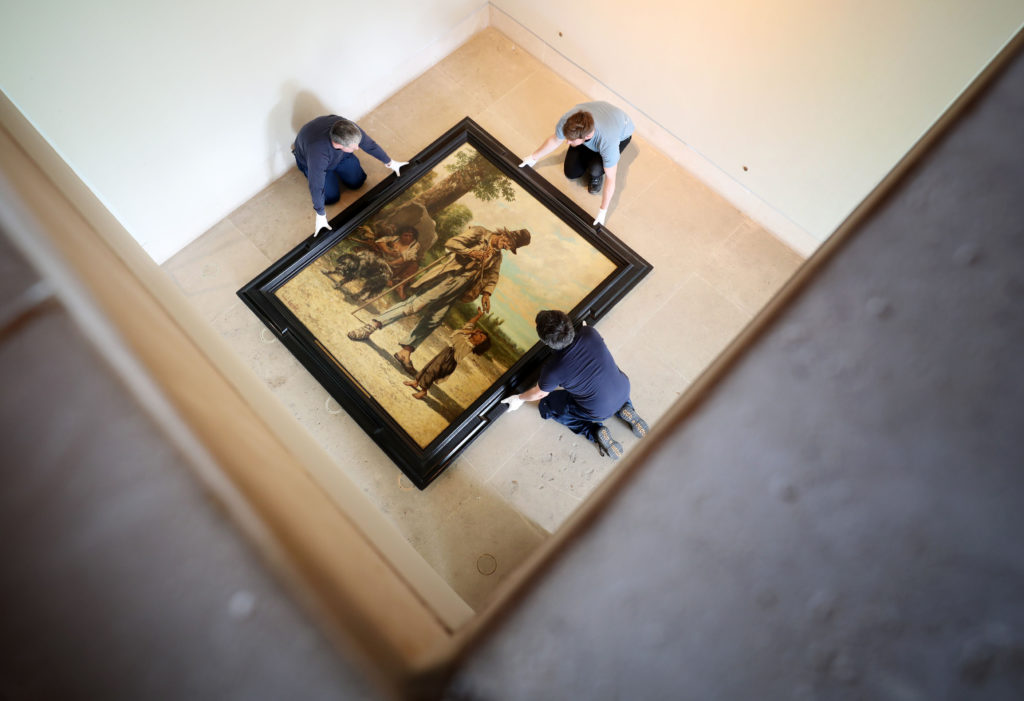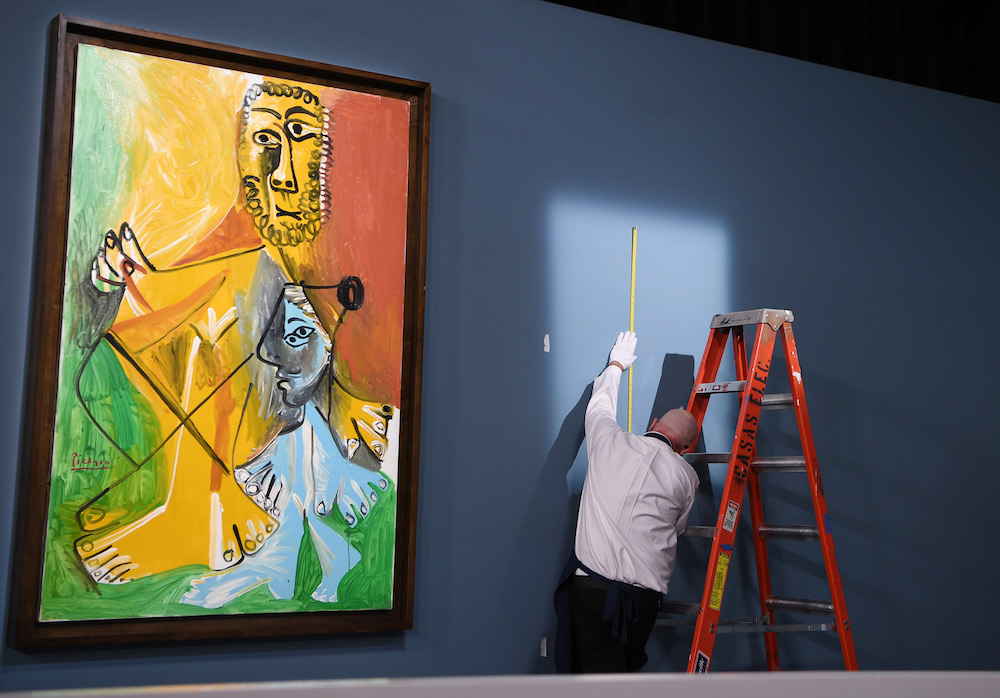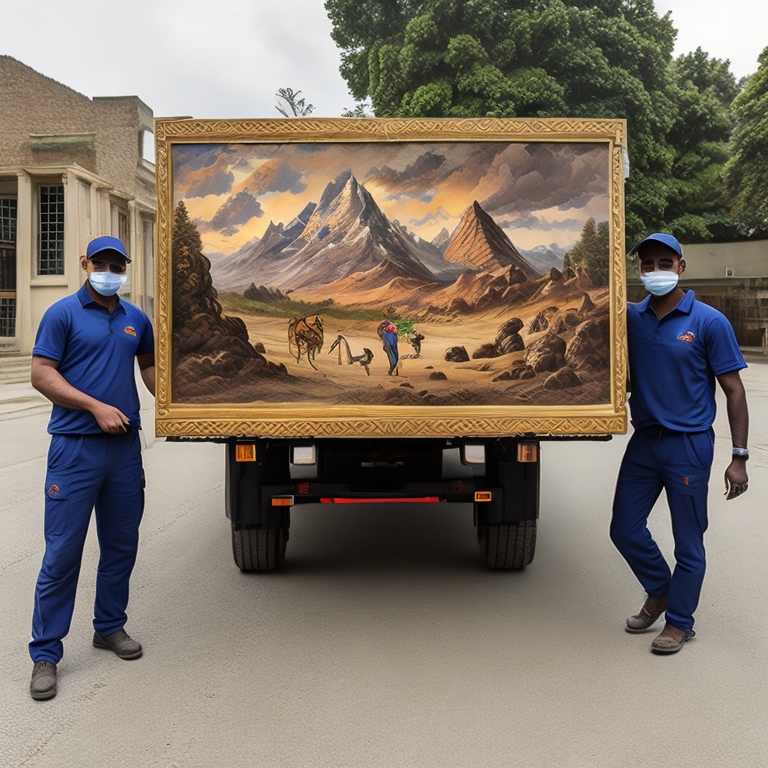So, what are the skills of art handling? let’s find out!
Art handling involves a range of activities, from carefully packing and transporting artworks to installing them in galleries or private collections. Art handlers must possess a diverse skill set to carry out these tasks effectively. Let’s explore the key skills that contribute to successful art handling.
Importance of Art Handling Skills

Proper art handling is crucial to protect artworks from damage, deterioration, or loss. Mishandling can lead to irreversible harm, compromising the value and integrity of the artwork. Art handling skills play a vital role in preserving artistic treasures for future generations to appreciate and study.
Knowledge of Art Materials and Techniques
Art handlers should have a deep understanding of various art materials and techniques. This knowledge allows them to handle different types of artwork appropriately. They must be familiar with the characteristics and vulnerabilities of diverse mediums, such as paintings, sculptures, photographs, or delicate installations.
What are the skills of art handling?
We’ll discuss all the skills of art handling in the following:
Packing and Transportation

One essential skill of art handling is the ability to expertly pack and transport artwork. Art handlers must know how to create customized packing solutions, ensuring the artworks are adequately protected during transit. They should be familiar with handling delicate, fragile, or oversized pieces, using appropriate packing materials and techniques.
Installation and Display
Art handlers are responsible for the proper installation and display of artwork. They must have a keen eye for aesthetics and spatial awareness to position artworks effectively. Art handlers should be skilled in using different mounting systems, tools, and equipment required for secure and visually pleasing installations.
Conservation and Preservation

Preserving the condition of artworks is a critical aspect of art handling. Art handlers need to understand and implement conservation practices to minimize the risk of damage and deterioration. They should be knowledgeable about temperature and humidity control, light exposure, and other environmental factors that can impact the longevity of artworks.
Communication and Collaboration
Art handling often involves teamwork and collaboration with curators, artists, museum staff, and other professionals. Effective communication skills are essential for understanding specific requirements and coordinating tasks. Art handlers must be able to collaborate seamlessly, ensuring that everyone involved in the process is well-informed and working towards a common goal.
Problem-Solving and Adaptability
Art handling situations can present unexpected challenges. Art handlers should possess strong problem-solving skills and the ability to adapt quickly to changing circumstances. They must be resourceful in finding solutions to issues such as difficult installations, transportation constraints, or time constraints.
Attention to Detail
Art handlers need to pay meticulous attention to detail. They must be able to identify even the smallest signs of damage or deterioration, ensuring timely intervention. A keen eye for detail is essential during all stages of art handling, from inspecting artworks to executing precise installations.
Physical Fitness and Manual Dexterity

Art handling often involves physically demanding tasks, such as lifting and maneuvering heavy objects. Art handlers should have good physical fitness and stamina to perform these tasks safely and efficiently. Additionally, they require excellent manual dexterity to handle delicate or intricate artworks with care.
Cultural Awareness and Sensitivity
Art handlers often work with artworks that hold cultural or historical significance. They should be culturally aware and sensitive to the unique value and context of each artwork. Understanding the cultural significance of different artworks helps art handlers handle them with respect and appropriateness.

Professionalism and Ethics
Art handling demands a high level of professionalism and ethical conduct. Art handlers often deal with valuable and confidential information about artworks and their owners. They must maintain strict confidentiality and adhere to ethical guidelines, ensuring the trust and integrity of the art community.
Continuous Learning and Adaptation
The field of art handling is ever-evolving, with new techniques, materials, and technologies emerging. Art handlers should embrace continuous learning to stay updated with industry trends, conservation practices, and advancements in art handling equipment. They should actively seek professional development opportunities and adapt their skills accordingly.
Technology and Art Handling
Technology plays an increasingly significant role in art handling. Art handlers should be familiar with relevant digital tools and software used for documentation, inventory management, and condition reports. Knowledge of specialized equipment, such as climate control systems or security devices, is also essential for efficient art handling.
Conclusion
Art handling is a specialized field that requires a combination of technical skills, artistic knowledge, and practical expertise. From handling delicate materials to coordinating installations, art handlers play a crucial role in preserving and presenting artworks. By mastering the skills discussed in this article, art handlers can ensure the safe handling and care of valuable artworks, contributing to the longevity and appreciation of artistic treasures.
Frequently Asked Questions (FAQs):
1. What qualifications do art handlers need?
Art handlers typically require a combination of formal education in art-related fields and practical experience. Degrees or certifications in art conservation, fine arts, or museum studies can be advantageous.
2. How can I become an art handler?
To become an art handler, gaining hands-on experience through internships or apprenticeships is highly recommended. Networking within the art community and showcasing relevant skills can also open up opportunities in the field.
3. Are there any risks involved in art handling?
Yes, art handling can involve certain risks, such as physical injury or damage to artwork. Proper training, adherence to safety protocols, and using appropriate protective equipment can help mitigate these risks.
4. Do art handlers work independently or as part of a team?
Art handlers often work as part of a team, collaborating with curators, gallery staff, or museum personnel. Teamwork is crucial for successful art-handling projects that require coordination and effective communication.
5. Can art handling be a career path?
Yes, art handling can be a fulfilling career path for individuals passionate about art and its preservation. With experience and expertise, art handlers can advance to positions of greater responsibility and specialization within the field.


